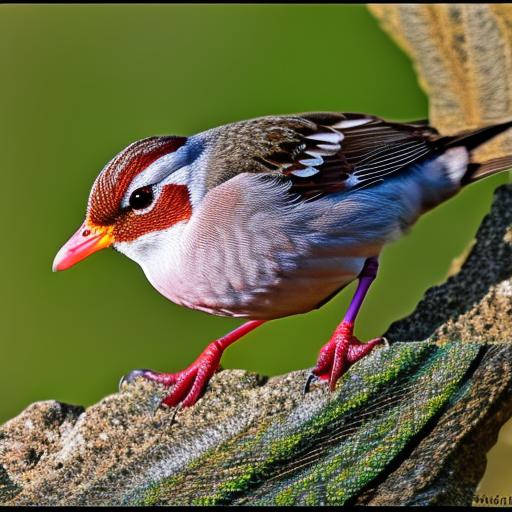Keeping geese away from certain areas can be a challenge, especially if they have become a nuisance. However, there is a natural and affordable solution that can help deter geese from unwanted areas – grape Kool-Aid. Yes, you read that right! Grape Kool-Aid has been found to be an effective geese repellent, and it offers several benefits over other methods. In this article, we will explore the science behind grape Kool-Aid’s effectiveness, how to prepare and apply it, as well as some tips for maximizing its effectiveness.
Key Takeaways
- Grape kool aid can be used as a geese repellent
- Geese need to be kept away due to their aggressive behavior and potential damage to property
- Grape kool aid works by disrupting the geese’s sense of taste and smell
- The acidity and color of grape kool aid make it an effective deterrent for geese
- To prepare the solution, mix grape kool aid with water and spray it in areas where geese are present
Understanding Geese Behavior
Geese can become a nuisance for several reasons. They are known to leave droppings everywhere, which can be unsightly and unsanitary. Additionally, their constant honking can be noisy and disruptive. Geese are also territorial creatures, and they may become aggressive towards humans or other animals if they feel threatened or if their nesting areas are disturbed.
Geese are attracted to areas with water and open spaces, making parks, golf courses, and residential areas with ponds or lakes particularly vulnerable to their presence. They are also drawn to areas with lush grass, as it provides them with a food source. Therefore, it is important to keep geese away from these areas to prevent damage and maintain a clean and safe environment.
How Grape Kool Aid Works
Grape Kool-Aid works as a geese deterrent due to its strong scent. Geese have a highly developed sense of smell, and certain scents can repel them. The scent of grape Kool-Aid is particularly effective in deterring geese because it is strong and unpleasant to them.
When geese encounter the scent of grape Kool-Aid, they perceive it as a threat or danger. This triggers their flight response, causing them to avoid the area where the scent is present. By using grape Kool-Aid as a geese repellent, you can create a barrier that discourages geese from entering or staying in unwanted areas.
The Science Behind Grape Kool Aid
Grape Kool-Aid contains several chemicals that contribute to its effectiveness as a geese repellent. One of the key ingredients is citric acid, which is responsible for the strong scent of grape Kool-Aid. Geese find the smell of citric acid unpleasant, which is why it repels them.
Another important chemical in grape Kool-Aid is artificial grape flavoring. This flavoring contains compounds that are known to be unappealing to geese. These compounds mimic the scent of predators or danger, triggering the geese’s flight response.
The combination of citric acid and artificial grape flavoring in grape Kool-Aid creates a powerful deterrent for geese. The scent is strong enough to repel them, but it is not harmful or toxic to them or other animals.
Preparation and Application
To prepare the grape Kool-Aid solution, you will need one packet of grape Kool-Aid mix and one gallon of water. Mix the packet of grape Kool-Aid with the gallon of water until it is fully dissolved. You can use a bucket or a sprayer to mix and apply the solution.
When applying the grape Kool-Aid solution, it is important to focus on areas where geese are likely to gather or frequent. This includes grassy areas near bodies of water, parks, golf courses, and residential areas with ponds or lakes. Spray the solution evenly over these areas, ensuring that it covers a wide enough area to create a barrier that geese will be deterred from crossing.
Tips for Maximizing Effectiveness

To maximize the effectiveness of grape Kool-Aid as a geese repellent, there are a few tips you can follow. First, apply the solution during the early morning or late evening when geese are most active. This will ensure that the scent is fresh and strong when they are likely to encounter it.
It is also important to reapply the grape Kool-Aid solution regularly, especially after rain or heavy watering. The scent of the solution can dissipate over time, so it is necessary to refresh it to maintain its effectiveness.
Additionally, consider using multiple deterrent methods in conjunction with grape Kool-Aid. This can include visual deterrents such as scarecrows or reflective tape, as well as noise deterrents like wind chimes or motion-activated sprinklers. By combining different methods, you can create a more comprehensive deterrent system that is more likely to keep geese away.
Safety Precautions
While grape Kool-Aid is generally safe to use around geese and other animals, it is important to take some safety precautions. Avoid spraying the solution directly on plants or crops that are intended for consumption, as the chemicals in grape Kool-Aid may not be suitable for ingestion.
It is also important to avoid spraying the solution near bodies of water that are inhabited by fish or other aquatic life. The chemicals in grape Kool-Aid can potentially harm these organisms if they come into contact with them.
Lastly, always follow the instructions on the grape Kool-Aid packet and use it as directed. Using excessive amounts of grape Kool-Aid may not necessarily make it more effective and could potentially harm the environment.
Alternative Methods
While grape Kool-Aid is an effective geese repellent, there are also alternative methods that can be used to keep geese away. One popular method is using decoys, such as plastic owls or coyotes, to create the illusion of predators in the area. Geese are naturally wary of predators and will avoid areas where they perceive a threat.
Another alternative method is using noise deterrents, such as propane cannons or ultrasonic devices. These devices emit loud noises or high-frequency sounds that are unpleasant to geese and can deter them from staying in the area.
Additionally, landscaping modifications can be made to discourage geese from gathering. This can include planting tall grasses or shrubs near bodies of water, as geese prefer open spaces and will be less likely to stay in areas with limited visibility.
Common Mistakes to Avoid
When using grape Kool-Aid as a geese repellent, there are some common mistakes that people make. One mistake is not applying enough solution or not covering a wide enough area. Geese are persistent creatures, and they may find ways to bypass the deterrent if it is not applied thoroughly.
Another mistake is not reapplying the solution regularly. As mentioned earlier, the scent of grape Kool-Aid can dissipate over time, so it is important to refresh it to maintain its effectiveness.
Lastly, some people may mistakenly believe that grape Kool-Aid alone will solve their geese problem. While it is an effective deterrent, combining it with other methods will increase the chances of success in keeping geese away.
Using grape Kool-Aid as a geese repellent offers several benefits. It is a natural and affordable solution that can effectively deter geese from unwanted areas. By understanding geese behavior and the science behind grape Kool-Aid’s effectiveness, you can prepare and apply the solution correctly to maximize its effectiveness. Remember to follow safety precautions and consider alternative methods for keeping geese away. With proper application and regular maintenance, grape Kool-Aid can be a valuable tool in managing geese populations and maintaining clean and safe environments.
If you’re looking for effective ways to keep geese away from your property, you might be interested in an article on Poultry Wizard titled “Using Grape Kool Aid to Deter Geese.” This article explores a unique method that involves using grape-flavored Kool Aid as a natural deterrent for geese. To learn more about this innovative approach, check out the article here. Additionally, if you’re interested in other poultry-related topics, Poultry Wizard offers valuable resources such as articles on chicken coop maintenance in Chester, SC (link), and the Producers Pride Sentinel Chicken Coop (link). They also provide insights into whether turkeys need a coop (link).
Meet Walter, the feathered-friend fanatic of Florida! Nestled in the sunshine state, Walter struts through life with his feathered companions, clucking his way to happiness. With a coop that’s fancier than a five-star hotel, he’s the Don Juan of the chicken world. When he’s not teaching his hens to do the cha-cha, you’ll find him in a heated debate with his prized rooster, Sir Clucks-a-Lot. Walter’s poultry passion is no yolk; he’s the sunny-side-up guy you never knew you needed in your flock of friends!







